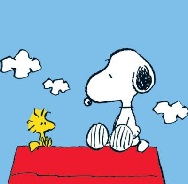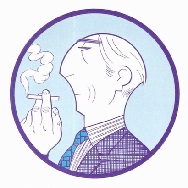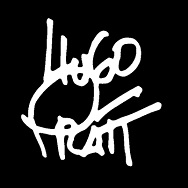English version at the end of the page.
Seconda parte dell’intervista a Paul Hornschemeier, creatore di Mamma, torna a casa (Tenué) e I tre paradossi (Comma 22). Qua la prima parte.
-Tu sei sempre molto attento alla cura editoriale dei tuoi lavori, te ne occupi di persona? Quanta importanza dai all’aspetto finale del libro?
Cerco di curare tutte le edizioni dei miei lavori, cosa che risulta però più difficile con le edizioni straniere. Il design del libro, incluso il tipo di carta, la stampa, la rilegatura, sono tutti fattori relativi all’esperienza della lettura perciò mi piace pensare a questo e scegliere consapevolmente. La storia è l’elemento più importante, ma come il lettore percepisce quella storia può essere influenzato da piccoli dettagli relativi al contenitore. Se non considerassi tutti questi piccoli dettagli finirei per sentirmi pigro.
 -Quali strumenti e che tecniche utilizzi per comporre una tavola? E come lavori con il colore?
-Quali strumenti e che tecniche utilizzi per comporre una tavola? E come lavori con il colore?
Molte delle mie tavole sono create ordinatamente. Solitamente inizio con un paio di righe di testo, che poi trasformo in un soggetto. Dopodiché faccio uno sketch preparatorio su uno sketchbook o ai margini del blocco Bristol che uso per le tavole finali. Quindi inizio a comporre la tavola definitiva disegnando i bordi a righello e definendo quanto spazio ogni vignetta debba occupare. Infine completo i disegni, decido il testo finale ed inchiostro il tutto. Per i colori prima riempio con i grigi e poi inizio scegliendo i colori di cui sono già sicuro. Scegliere il colore del muro o del cielo, o comunque dello sfondo dominante è la cosa che mi impegna per più tempo, poiché sarà quello ad influenzare maggiormente la scena.
-Come è stato, dunque, colorare Omega the unknown ?
E’ stata un’esperienza interessante ma dubito che lo rifarei. Lavorare con Jonathan Lethem (che è stato una delle mie letture preferite per molto) e Farel Darlymple (di cui sono amico da molti anni) è stata una opportunità unica. Anche se sono felice dell’esperienza, è stata una quantità mostruosa di lavoro che mi ha fatto capire come sarebbe stato difficile lavorarci senza questo team. E ho scordato Gary Panter: aver messo Gary Panter nell’impresa è stato un buon incentivo.
 -Per la Marvel hai scritto una storia con Nightcrawler e Molecular Man. Perché hai scelto questi personaggi?
-Per la Marvel hai scritto una storia con Nightcrawler e Molecular Man. Perché hai scelto questi personaggi?
Per me scrivere supereroi è come scrivere fantascienza. Inizio con un problema filosofico. Da un certo punto di vista ho scelto poi Nightcrawler perchè mi piace visivamente, ma non avevo ancora una storia in mente. Così ho iniziato a sfogliare vecchie copie di Marvel Universe (o comunque si chiami… Guida al Marvel Universe o cose così) e ho trovato Molecule Man. E’ stato una scoperta eccellente: ecco un personaggio che non ho mai sentito nominare – che ho immaginato poco conosciuto anche dai lettori – con praticamente i poteri di un dio. Così ho pensato a quanto noiosa potesse essere la vita per questo personaggio, quanto poco gratificante, se avesse potuto controllarlo davvero. Gli strani poteri di teletrasporto di Nightcrawler mi è sembrata un’ottima combinazione con l’onnipotenza di Molecule Man, così ho iniziato a scrivere qualcosa con loro per vedere cosa ne sarebbe venuto fuori. Il risultato è ciò che potete leggere su Strange Tales.
-Leggi ancora fumetti? Quali autori segui e di quali subisci l’influenza?
Sì, leggo ancora fumetti anche se non vado spesso in fumetteria come facevo prima. Più che altro leggo gli articoli delle riviste o romanzi di prosa. Ecco i fumettisti che seguo ancora: Daniel Clowes, Charles Burns, Michael Kupperman, Anders Nilsen, Kevin Huizenga, Studio Elvis, Eamon Espey, John Pham. In più un paio dei miei artisti preferiti – che appartengono di più al mondo del design (anche se il loro lavoro è molto cartoonesco) – sono Jesse LeDoux e James Jarvis.
-Puoi rivelarci qualcosa dei tuoi progetti futuri?
Proprio adesso sto lavorando su un paio di screenplay e ad un paio di libri di prosa, ma il principale progetto riguardo i fumetti è la prima uscita per il rilancio di Forlon Funnies. Uscirà a novembre negli USA per la Fantagraphics. Saranno due numeri ogni anno, di circa 48 pagine ciascuno, con short stories di vario genere e lavori più lunghi a puntate.
La mia prossima graphic novel (che ho finalmente terminato qualche mese fa) Life with Mr. Dangerous uscirà negli USA per l’estate del 2011. Abbiamo da poco anche firmato per i diritti italiani, anche se non so con preciso quando uscirà da voi.
English version:
Second part of the interview. First Part here.
 -You are very careful with all of your books editions, do you edit all personally? do you give very importance to the book’s appearance?
-You are very careful with all of your books editions, do you edit all personally? do you give very importance to the book’s appearance?
I try to edit every presentation of my work, though that’s less of a possibility with some of the foreign editions. The book design, including the paper stock, the printing, the binding, all of that informs the experience of reading the book, so I like to think about that and make conscious choices about it. The story is what matters the most, but how the reader experiences that story can be influenced by some of the smallest details of the container holding the story. If I didn’t consider all of those smaller details, I would end up feeling lazy.
-What type of tools and techniques do you use to compose a page? And what about the colors?
Most of my pages build up organically. I usually start with a line of text, then build that into a solid script. Then I draw extremely scratchy thumbnail layouts in a sketchbook or in the margin of the actual Bristol Board that I’ll use for the final page. Then I just do a really fast rendering of that thumbnail on the Bristol Board, where I start using a straightedge to rule out the panels and figure out exactly how much space each moment should receive. From there I draw in the final drawings, decide on the final text, and eventually ink it.
For colors, I fill everything in with grays first and then just start picking colors I feel pretty sure about. Choosing the wall colors or the sky, or whatever the dominant background is usually takes me the longest, since that’s what goes the farthest towards influencing the feeling of the scene.
 -So how was it to colour Omega the Unknown?
-So how was it to colour Omega the Unknown?
It was interesting experience, but one I doubt I could ever repeat. Working with Jonathan Lethem (who has been one of my favorite writers for some time) and Farel Dalrymple (with whom I’ve been friends for many years) was a unique opportunity. While I’m glad I did it, it was a mountain of work and it let me know that without that creative team it would have been too arduous. I forgot to mention Gary Panter: throwing Gary Panter into the deal isn’t a bad incentive either.
-For Marvel you put to the test a story with NightCrawler and Molecule Man, Why did you choose this two characters?
For me, writing a superhero story is like writing science fiction: I start with some sort of philosophical problem. To some degree I picked Nightcrawler just because I liked him visually, but I didn’t really have a story there. So for this story I was looking through old copies of Marvel Universe (or whatever it’s called… Guide to the Marvel Universe or something like that) and came across Molecule Man. He was such a golden find: here was a character that I had never heard of, that I assumed would be relatively unknown or unfamiliar to readers, but who had essentially the powers of God. And I thought of how boring life must be for this character, how unsatisfying life would be if it could truly be controlled. The odd physics of Nightcraler’s teleportation seemed like a great combination with Moelecule Man’s omnipotence, so I started throwing them together to see what would happen. The result is what ended up in Strange Tales.
 -Do you still read comics today? Which authors do you follow now and which are influenced you?
-Do you still read comics today? Which authors do you follow now and which are influenced you?
I read some comics, though I don’t get to comic shops like I used to. Most of the time I’m reading articles in magazines, or prose novels. But as far as the cartoonists I stil read: Daniel Clowes, Charles Burns, Michael Kupperman, Anders Nilsen, Kevin Huizenga, Studio Elvis, Eamon Espey, John Pham. A couple of my favorite artists these days who come more from the design world than the comics world (though their work is very “cartoon-ish”) are Jesse LeDoux and James Jarvis.
-Can you reveal something about your future projects?
I’m working on a couple different screenplays right now, as well as some prose books, but the main comics project is the first issue of the re-launched Forlorn Funnies. That will be coming out in the States in November from Fantagraphics. There will be two issues per year, around 48 pages each, with a variety of stand alone shorter pieces as well as serializing longer stories.
My next graphic novel (which was finished a few months ago, finally), Life with Mr. Dangerous, will be coming out in the States in the summer of 2011. We’ve just recently signed the Italian rights off for that book, though I’m not sure when it will be coming out there.
thank you Paul!
traduzione a cura di Marco Sanfilippo.









